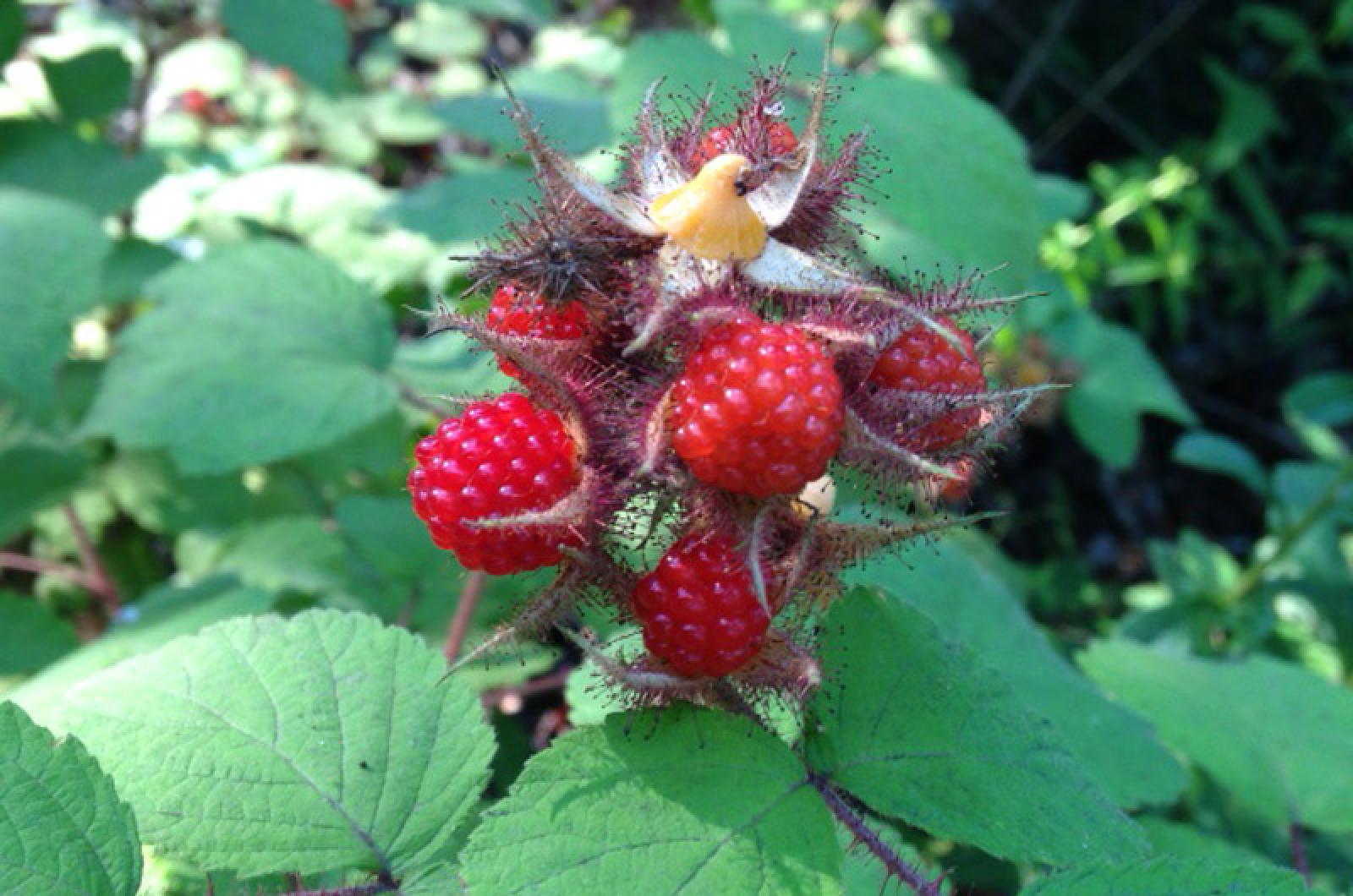Should you whine if you have wineberries?
Known an invasive species and delicious delicacy, even I, a native-plant loving naturalist, am on the fence about this relative of blackberries, raspberries and dewberries. It is a bit of a quandary.
There are two sides to this botanical coin. Noted contemporary biologist, E.O. Wilson, has this to say: “On a global basis...the two great destroyers of biodiversity are, first, habitat destruction and, second, invasion by exotic species.”
In another time, Thomas Jefferson, insisted: “The greatest service that can be rendered to any country is to add [a] useful plant to its culture.”
So this aggressive species with its beauteous berries embodies the wolf in sheep’s clothing dilemma. Hailing from Asia, wineberry was brought to this country in the late 1800s as an ornamental and to serve as breeding stock for blackberry and raspberry cultivars. However, as so often happens, it easily escaped cultivation, and by the 1970s was considered a pesky plant that outcompetes natives and creates dense, monoculture thickets.
This intrusive plant’s edibility is much appreciated by the wild food lover. As a member of the Rubus genus, it is known for its tasty and plentiful ruby red fruits, which are harvested in late summer.
Even though wineberries reduce and compromise native habitat, the plant provides food for wildlife as well as people. Birds happily consume the ripe rosy treats, box turtles munch on low-hanging fruit, and mammals eat their fill. Humans make jam, jellies, pies and use them as one would raspberries and blackberries. In singing the fruit’s praises, one devotee noted that they “make a person give thanks for being born with taste buds.”
It is easy to identify wineberries, and, obligingly, there are no poisonous lookalikes. The leaves, stems and branches are all covered with hairs or spines and the plant appear red due to the ruby-hued canes. The leaves are green on top and white on their underside and most distinctively are in sets of three, with two small side leaves and one large center leaf.
The fruits, usually called berries, are not botanically such. Technically, they are aggregates of ‘drupes,’ because a true berry is a fruit that comes from a single ovary of a flower, while wineberries are formed from many ovaries of multiple tiny aggregate flowers.
Interestingly, the fruits have another identifying characteristic. They are covered with a sticky fluid that mimics the sticky liquid released by carnivorous plants. Research has shown that in wineberries, this substance commonly ensnares insects, but they are not ingested.
As hermaphrodites, wineberries can self-fertilize and have little need for insects to pollinate. These plants can also easily spread through underground rhizomes, tip rooting and seed dispersal by animals.
Clearly, we have a thorny issue with this prickly plant, given its benefits and detriments. So while I will happily pick and enjoy its gifts, I will never plant or encourage it because I know that if you give a weed an inch it will take a yard.
Suzan Bellincampi is director of the Felix Neck Wildlife Sanctuary in Edgartown, and author of Martha’s Vineyard: A Field Guide to Island Nature.




Comments
Comment policy »